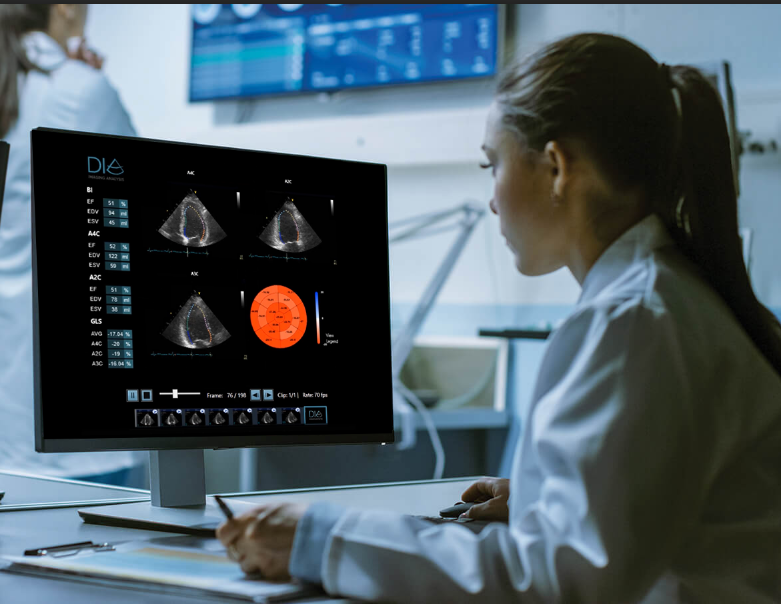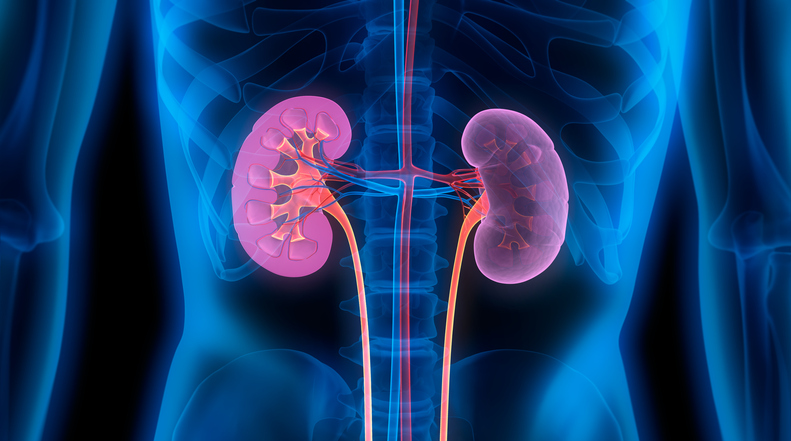
DiA Imaging Analysis AI-based ultrasound software
The American College of Healthcare Executives recently released its survey of the biggest challenges hospitals face with a new concern taking the top spot: labor shortages. Since 2004, the no. 1 concern had been financial challenges. However, labor shortages now snagged the number one spot. And the healthcare labor shortage impacts multiple specialties. Radiology is no exception, especially in pediatric radiology.
Some hospitals have turned to AI to address the provider shortage, and in the field of radiology, there are a number of options to harness AI solutions – for ultrasound as well as CT scans. For example, DiA Imaging Analysis – based in Be’er Sheva, Israel – claims that its AI-based ultrasound software not only improves ultrasound images, but also offers analysis the human eye can miss. It’s not just a matter of designing AI solutions that addresses the provider shortage by automating some processes. The company’s software also read images more accurately than even a provider could, something that human radiologists excel at only over years of experience.

With the Rise of AI, What IP Disputes in Healthcare Are Likely to Emerge?
Munck Wilson Mandala Partner Greg Howison shared his perspective on some of the legal ramifications around AI, IP, connected devices and the data they generate, in response to emailed questions.
“DiA’s AI-based ultrasound software solutions automate the way physicians use and analyze ultrasound images. The technology utilizes advanced image processing, pattern recognition, deep learning, and machine learning algorithms to imitate the way the human eye detects image borders and identifies motion,” said Hila Goldman-Aslan co-founder and CEO of DiA Imaging Analysis in an email. “Using AI, DiA solves the two main challenges clinicians struggle with when performing analysis: capturing the right image view and analyzing the images correctly.”
The shortage of providers is only expected to worsen, according to the AAMC.
“The AAMC predicted that by 2034, the shortage of specialist physicians, including radiologists, could surpass 35,000. Radiologists will likely manage larger scan volumes, exacerbated by the Covid backlog of exams,” said Ariella Shoham, vice president of marketing at Aidoc – which produces AI solutions for CT scans that flag positive acute findings from scans and move them up on the radiologist’s list – in an email.
“Since radiologists tend to work in chronological order down their worklist, they may be unaware of urgent cases that are further down, and as a result, the turnaround time to report any positive acute cases could increase and lead to worse patient outcomes if AI is not used,” Shoham said.

When Investment Rhymes with Canada
Canada has a proud history of achievement in the areas of science and technology, and the field of biomanufacturing and life sciences is no exception.

Aidoc’s AI solution for CT scans
Additional AI solutions address the provider shortage in the ER setting. For example, Mumbai, India-based Qure.ai has AI technology that can quickly evaluate X-rays and scans to help radiologists prioritize and triage the most pressing cases.
“Our extensively tested and proven algorithms show how the power of data-driven, AI-based technology can literally save hundreds of thousands of lives across a variety of heath care settings,” said Prashant Warier, CEO and founder of Qure.ai in a press release. “We’re on the cusp of an exciting quantum leap forward in radiology and medical imaging. Not only can we increase clinical accuracy, but we can also improve radiology department efficiencies by aiding in the triage process. In many cases, this equates to the difference between life and death, especially in the emergency room.”
These AI solutions attempt to not only address the provider shortage, but to offer an improvement beyond the current standard of care, whether increasing accuracy or speed.
“In the past 2 years, we’ve seen the need to reduce processing times and eliminate workflow delays. For patients with neurocritical conditions like head trauma or stroke, quick diagnosis and treatment are crucial for improved outcomes,” Warier said in an email. “Qure.ai’s AI technology can help prioritize situations that require quick care and acts as a radiologists’ assistant, ensuring that even tiny bleeding or lesions are not overlooked. Automating a lot of the grunt work through AI also has a positive impact in managing physician workloads and thereby reducing burnouts.”
Photo: DiA Imaging Analysis and Adioc












